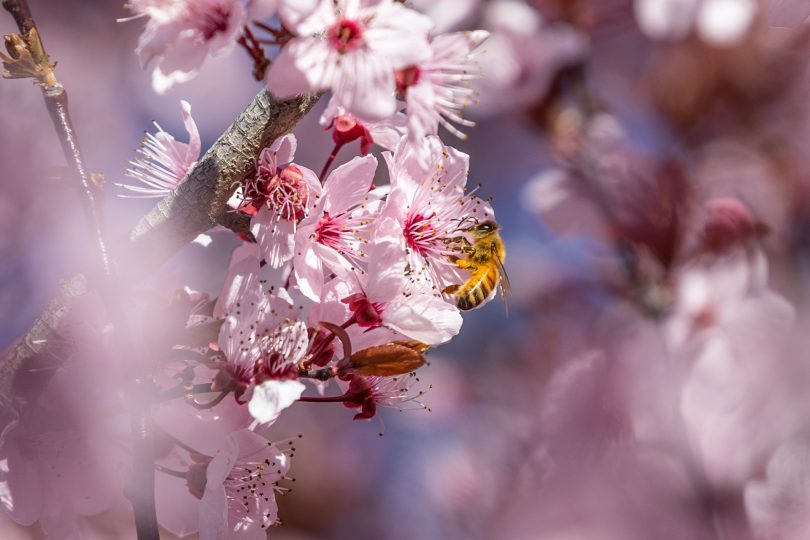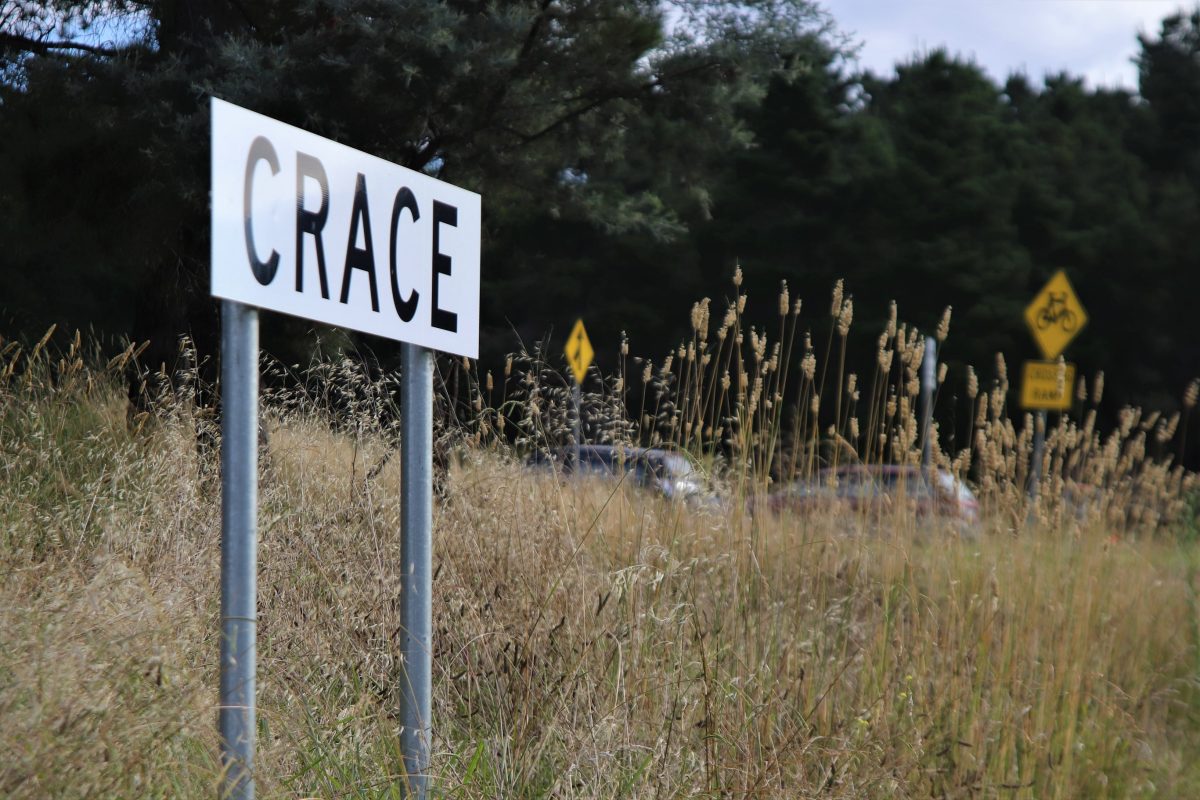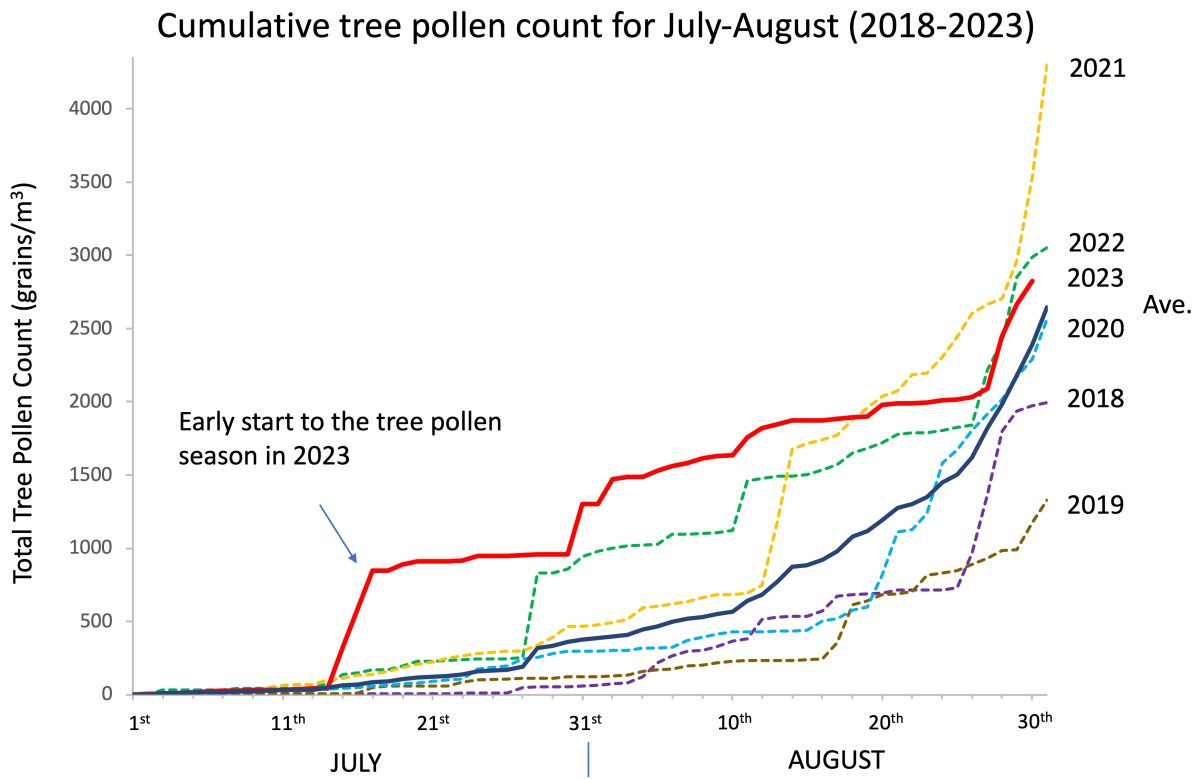
Canberra suffered through 30 days of ‘extreme’ pollen last year, the worst since official records began. Photo: Thomas Lucraft.
The blossoms are out, flinging splotches of white, pink and yellow all over Canberra, and that’s lovely to look at from a very great distance while wearing a HAZMAT suit with a HEPA-grade air-filtration system.
That’s because with the warmer weather and colours of spring comes pollen, and with pollen comes allergies – hay fever, asthma and general sniffling and coughing on air you can almost taste.
Many are still recovering from last year – the worst on record for pollen in Canberra.
The Canberra Pollen Research project, run through the Australian National University (ANU) and supported by ACT Health, has provided a daily pollen count and forecast of grass pollen levels in the air around the city for nearly 12 years.
In an average year, researchers would record about five ‘extreme’ pollen days.
But over 2022, more than 30 extreme days were recorded, 16 of which were consecutive. This made it officially the worst season since records began.
Researchers put this down to the climate conditions brought on by La Niña when local flora responded to higher-than-average rainfall.

The ACT Government had to double down on grass mowing last year, but it still wasn’t enough to keep the ryegrass at bay. Photo: File.
But that was then. What can we expect this year, when the Pacific Ocean’s weather patterns appear to be shifting to El Niño, and the Bureau of Meteorology (BOM) is predicting “warmer and drier conditions across most of southern and eastern Australia“?
Lead researcher Dr Simon Haberle (aka, ‘That Pollen Guy’ on X, formerly Twitter) says it’s hard to put a figure on future pollen count, but there are some early indicators.
“We have observed what it looks like when we have an El Niño year. When it is dry, droughts are common and the grass, in particular, is less productive, so we typically have a lower-intensity hay fever season.”
Ryegrass is the main culprit in Canberra and starts its growth season towards the end of September, peaks in November, and lasts through to January. To make matters worse, prevalent north-westerly winds over the same time period scatter the dust far and wide.
From now until late October, pollen from trees such as Cypress pine, pine, elm, birch, ash, poplar and plane is most common, and while it might not be as problematic for as many people as ryegrass, these levels are not looking much better.

Tree pollen levels are already tracking strongly. Photo: Canberra Pollen.
“The 2023 winter tree pollen season is starting earlier and stronger than previous years,” Dr Haberle says.
Warm winter temperatures may have contributed to this, as well as lingering moisture in the soil.
“There’s still a bit of energy in the ‘system’ to produce hyperactivity in the trees and potentially the grasses as we move forward.
“Whether or not this is also the pattern we see in the grass pollen season for 2023 is yet to be determined, but all signs point to at least a strong grass pollen season that will start in late September to early October.”
In other words, you’ll be needing that HAZMAT suit.













